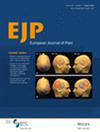Spontaneous Pain and Pain Sensitivity in Response to Prolonged Experimental Sleep Disturbances—Potential Sex Differences
Abstract
Introduction
Insomnia is a highly prevalent condition that predisposes individuals to many chronic pain disorders, with most of them showing pronounced sexual dimorphism. We investigated whether experimental insomnia-like sleep disturbances (ESD) affect spontaneous pain and pain sensitivity, and whether sex modulates pain responses.
Methods
Twenty-four healthy participants (50% females, age 28.3 ± 5.9 years) participated in a study consisting of two 19-day in-laboratory protocols—an ESD protocol consisting of repeated nights of short and disrupted sleep with intermittent nights of undisturbed sleep and a control sleep (CS) protocol consisting of 18 nights with an undisturbed 8-h sleep opportunity. Spontaneous pain was assessed using electronic rating scales during daytime and night-time wake periods. Pain sensitivity was assessed through pressure and heat pain threshold measures every other day of the protocol.
Results
Females responded with higher daytime pain ratings in the ESD compared to the CS condition, while males responded with lower pain ratings (p < 0.05 for condition*sex). Spontaneous pain ratings were higher at night-time than during daytime and worsened across successive nights of sleep disturbances, independent of sex (p < 0.05 for condition*study day*daytime-night-time). Females developed greater pressure pain sensitivity, while males developed greater pain sensitivity to heat in the ESD compared to the CS condition (p < 0.05 for condition*sex).
Conclusion
Pain responses to sleep disturbances strongly vary by sex and may contribute to sex differences in the prevalence and symptom burden of many chronic pain conditions. Because the study was not a priori powered on sex, findings are preliminary and require follow-up in larger samples. Findings further suggest to specifically target night-time pain in sleep disturbed individuals, for example, through optimised timing of analgesic-acting medications.
Significance
Exploration of sex as a modulator suggest that sleep disturbances amplify spontaneous pain and pressure pain sensitivity to a greater extent in females than in males, and this may contribute to females' overrepresentation and disproportionate symptom burden observed for many pain-related disorders for which insomnia is comorbid or a risk factor.

 求助内容:
求助内容: 应助结果提醒方式:
应助结果提醒方式:


